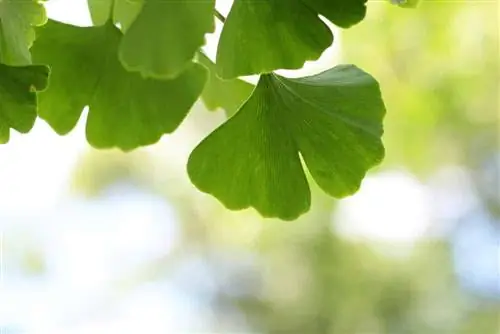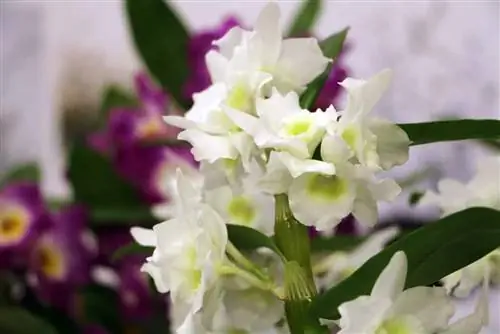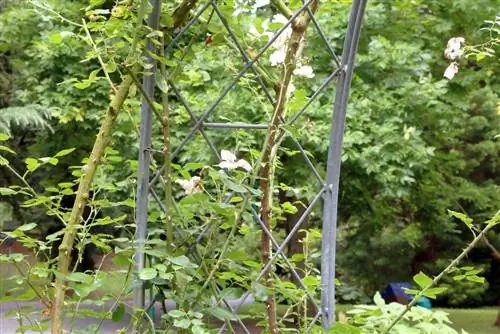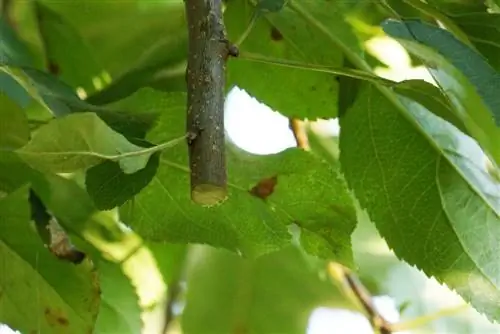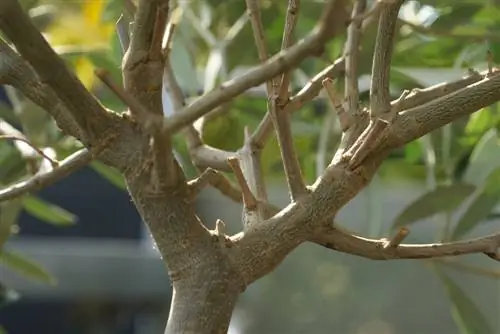- Author admin [email protected].
- Public 2024-01-31 11:14.
- Last modified 2025-01-24 12:45.
Gingko is considered the oldest tree in the world. A tree species that has existed for so long must have a special power within it. This is why gingko has a mystical meaning in Asia. Its unusually shaped foliage arouses widespread interest in this country. How does the Biloba tree develop a beautiful and compact crown? Can some of the vital shoots be removed with scissors?
Ginko or ginkgo?
When it comes to this tree that comes from Asia, we come across two spellings of its name. What is it called correctly, Ginko or Ginkgo? Both forms of the name are now valid. You may also have encountered the ginkgo tree in Germany under the following names:
- World Tree
- Fan Leaf Tree
- Animated Egg
- Silver Apricot,
- Japan tree
Note:
Did you know that even Goethe once wrote a poem about the Ginkgo Biloba for his lover? This also earned the tree the name Goethe Tree.
Growth habit
The young Gikgo tree initially strives upwards. It is characterized by a straight and slender growth. At the beginning of their existence, ginkgo trees only have a few branches. The majority of trees have two main shoots, although they are of different strengths. It takes more than 25 years for the tree to develop a wider crown on its own at a lofty height. So for years there is a plant in the garden that is a tree but doesn't look like one. At least not as expected and desired in this country. The gardener quickly asks himself whether he can use the pruning shears to get the desired crown from the ginkgo.
Cutting allowed?
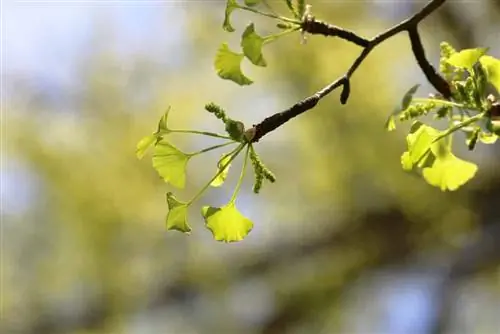
The tree called a living fossil has survived all the vicissitudes of this planet. Of course, without the support of the people who populated the earth much later. Even today he is not dependent on her tools, i.e. the secateurs. He just takes the time he needs and grows the way his plan calls for. The tree is very robust. If the owner takes part of its branches, it survives unscathed. Sometimes it even provides the branches that its owner wanted to achieve with the cutting. So feel free to use scissors. However, with caution and patience.
The right time
Whenever you decide to prune your ginkgo tree, wait until spring to do so. There is no urgency and any waiting time does not create a disadvantage that cannot be corrected. During this time, the ginkgo will not make any big leaps or make any unexpected growth changes.
- >Spring is the best time of the year
- >strong frosts should be waited for
- >the growing season is still ahead of him
- >the Biloba can react to the cut in terms of growth
- >new shoots are formed in summer
Tip:
If spring is still far away but you absolutely have to cut, autumn is also a good time for this.
Topiary
A ginkgo tree shoots straight up without any side branches. A beautiful and bushy crown is nowhere to be seen. It will stay that way for a long time if he is left to his own devices. It doesn't necessarily have to happen that way, because as long as the tree is still young, it is malleable. With skillfully executed cuts, the crown structure is directed in the desired direction.
- Frequent pruning is required for a denser crown
- prune young trees annually
- shorten annual side shoots
- also shorten the main shoot
- prune all outwardly growing branches
- branches growing quickly upwards are trimmed
- no cuts in the old wood
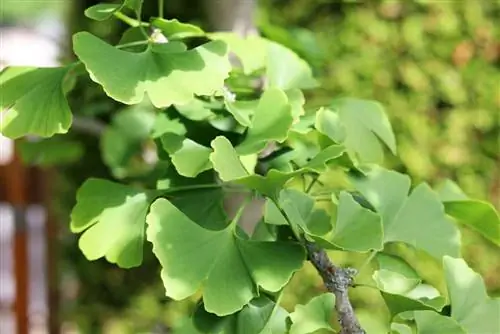
Cuts in old wood are only unavoidable in young trees if entire branches are to be removed. The old wood must also be cut if the tree is to be pruned. So branches and twigs in the lower part of the trunk are removed.
Cutting old trees
Old ginkgo trees are not cut. There is usually no need for this. If it has received a training cut as a young tree, the crown structure has already been established. Now he is left to the course of nature. Only occasionally does it happen that one or two branches have to be removed from the tree. Then you can of course cut, although the best time for this is the beginning of the year.
Lighten regularly
Occasionally a tree grows so bushy that the entire crown cannot receive sufficient light. Then it is necessary to remove part of the branches. This will rarely be necessary with the ginkgo tree. Dense growth can only occur if it has been heavily cut beforehand.
- lighten regularly if necessary
- remove branches growing inwards
- cutting crooked, annoying branches
- thin out branches growing close together
Remove dead and broken branches
Individual branches that disrupt the crown appearance can also be removed from old ginkgo trees. Likewise dead and broken branches.
- cut broken branches promptly
- otherwise spring is more suitable
- alternatively also autumn
- remove with a smooth cut close to the trunk
- this way the tree can cover the wound better
- Use sharp and clean secateurs
- Thicker branches can be cut with a saw
Taking cuttings
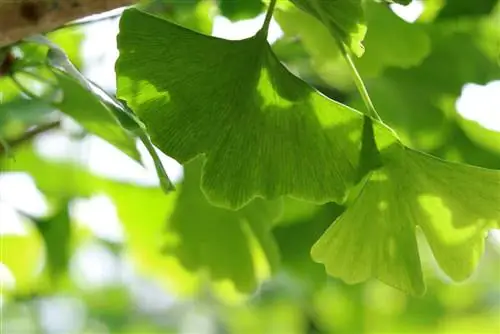
The Ginko can be propagated via cuttings. This type of propagation requires a lot of technical skill and appropriate equipment. This requires a greenhouse that has a mist system. This is rarely the case in the home garden sector. All those who have the opportunity to use this propagation method can obtain cuttings from an existing tree.
- Cut cuttings at the end of May
- when new shoots have reached a length of 20 cm
- cut shoots about 10 cm long
- with at least three knots
After treatment with a growth hormone, they are placed in moist potting soil.
Closing cuts
Small branches also leave small cuts that do not require further care. The only important thing is that the interface is smooth and clean. After removing thicker branches, it is advisable to close the open areas. There is definitely a risk of fungal infections. You can buy suitable products at any garden center.

